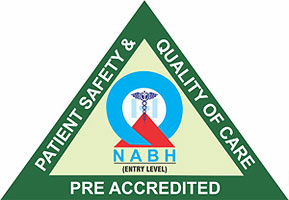+91-7291089674 (Bandra)
+91-7291092120 (Kandivali)




December 4, 2023 | Author: Admin
As we get older, our eyes go through some changes, just like the rest of our body. Some eye problems are more likely to happen as we age, even though they can happen to anyone at any age. Growing older can lead to different eye conditions that might influence how well we can see and how healthy our eyes are overall. It’s good to know about these common eye issues so we can do things to stop or handle them.
In this article, we’ll talk about some of the most common eye problems that older adults might face.
Certain eye problems can cause older adults to lose their vision or even go blind. Sometimes, these issues might not show many signs in the beginning. That’s why it’s really important to have regular eye checkups. If your eye doctor catches a problem early, there are often steps you can take to keep your vision safe.
Cataracts are a common eye problem in older adults, and smoking and diabetes also raise the risk of cataracts. They occur when the lens inside the eye becomes cloudy, leading to blurry or hazy vision. This condition can make it difficult to see clearly, especially in bright light or at night.
The signs of cataracts include:
Cataract surgery is a highly effective treatment option where the cloudy lens is replaced with a clear artificial lens.
AMD is a progressive eye disease that affects the macula, the central part of the retina responsible for sharp, central vision.
The signs of age-related macular degeneration include:
While there is no cure for AMD, early detection and lifestyle changes can help slow its progression.
Retinal detachment happens when a thin layer inside the eye that helps us see, called the retina, gets separated. This can occur due to a tiny tear or too much fluid buildup.
The signs of retinal detachment include:
If it’s not taken care of promptly, it can lead to a permanent loss of vision.
Glaucoma is a group of eye conditions that can damage the optic nerve, leading to vision loss. It often develops slowly and without noticeable symptoms in the early stages.
The signs of glaucoma include:
Regular eye exams are crucial for early detection and treatment. Treatment options for glaucoma include prescription eye drops, laser therapy, and surgery.
Dry eye syndrome becomes more common as we age. It occurs when our eyes don’t produce enough tears or when the quality of the tears is poor.
The signs of dry eye syndrome include:
Artificial tears, lifestyle changes, and, in some cases, prescription medications can help manage dry eye symptoms.
Here are some more eye problems that can affect us as we get older:
If you notice any of these, talk to your doctor to help with your vision.
Understanding the most common eye problems in aging adults is essential for maintaining good eye health as we grow older. Regular eye exams, a healthy lifestyle, and early intervention are key to managing and preventing these conditions.
If you or a loved one are experiencing any changes in vision, consult with the expert team of Eye Specialists at Ojas – Eye Hospital in Mumbai for proper diagnosis and treatment.
Remember, taking care of your eyes is an important part of maintaining overall well-being as you age!